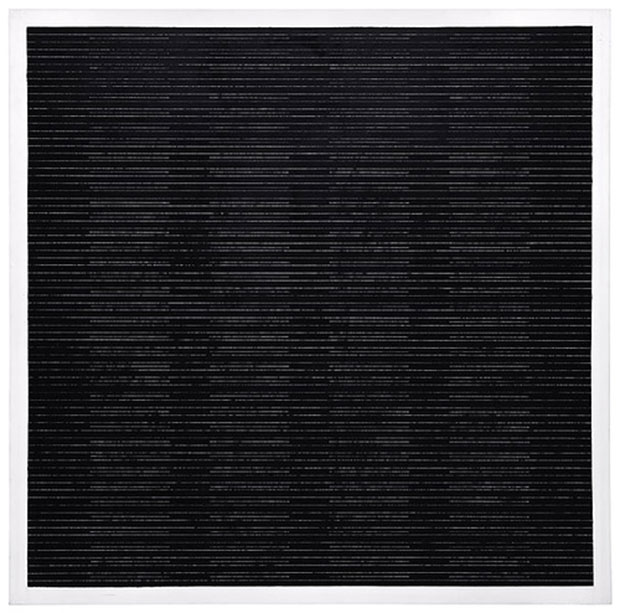
Arne Glimcher on Agnes Martin's disappearing act
The Pace Gallery boss on why she left the NY loft she shared with Jasper Johns and went missing for a year
The Agnes Martin retrospective at Tate Modern opened yesterday to well-deserved rave reviews. As you may already know, Pace Gallery founder Arne Glimcher was a lifelong friend of Martin as well as being her dealer for the bulk of her career. Arne has written a truly awe inspiring monograph on the artist. We caught up with him at the start of the week to ask him about his recollections of the reclusive artist. You can read part one of our interview here. In our second part, below, Arne takes up Martin's story at the beginning of the 1960s when she's living in a sail maker’s loft in the now legendary neighbourhood of Coenties Slip in lower Manhattan. Here, her housemates and neighbours included Jasper Johns, Ellsworth Kelly, Robert Indiana and Lenore Tawney. Barnett Newman who later hung her paintings at The Betty Parsons Gallery, also had a studio nearby.
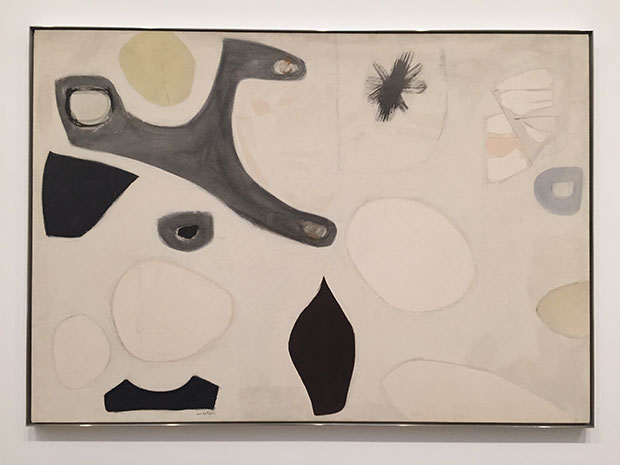
"I first met Agnes in 1963 at a party in Jack Youngerman’s loft," Arne recalls. "She, Jack, Ellsworth Kelly and Robert Indiana all lived in the same condemmed building. It didn’t have heating or water or anything. They used to take showers across the street in the Seamen’s Union!
This first time I met her I felt like she was a lecturer! She didn’t let you in at all! But we struck up, not a friendship, but a mutual respect, and she lectured at me and she said wonderful things to me. I was pretty young, in my early twenties, and she was so enlightening and her wisdom astonished me. Really, she helped shape my aesthetic. She helped extend my perception. She was very important to my life and career.
Can you shed any light on her flight from New York and subsequent 18-month disappearance? The thing about Agnes was that she believed that pride was something that was destructive and that’s really why she left New York - I’m convinced. By then she had become quite famous in the inner circle of the art world, though outside of that circle lots of people thought the paintings were ridiculous, just lined paper. She suddenly had the adulation of a lot of her peers and couldn’t take it. She didn’t want to take responsibility for the work at all and it caused a terrible breakdown so she stopped painting and left New York. It was only solitude that got her painting again.
She once referred to this as an 'overdeveloped sense of resonsibilty', didn’t she? Why do you think that was? Well, she separated herself so much from the work. So in a funny way the work was an entity in itself. I don’t know but I can only imagine it was too much for her to cope with. She was certainly a fragile person. She was this pioneer woman but she was a very fragile person. But she was resilient, she would come out of periods of illness and she’d snap right back in the most impressive way. I think in some ways I filled a void. I think I was the son that she never had. And she was very, very sweet to me. (The kindness was reciprocal. Glimcher sat with Martin during her final days, singing many of her favourite songs to her).
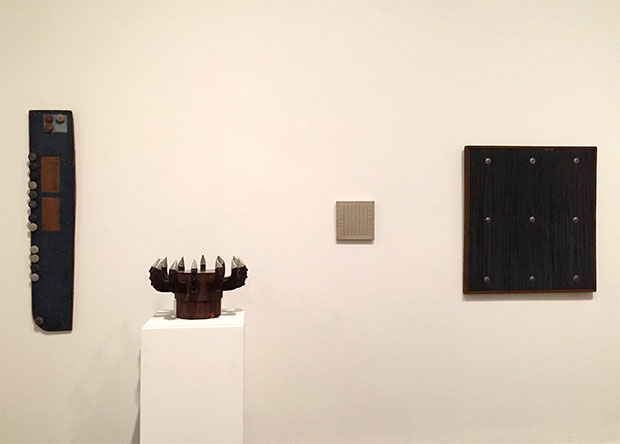
You were not representing her at the time but can you remember the first time you saw one of her grid paintings? Yes, and I was astonished that it was a painting. Very few times in your life do you see something that you’ve never seen before. I’m sure it was like that when the first cubist paintings were shown. And with Agnes, it was the same thing. It was a painting that had stripped away every possible bit of emotion and colour. Everything was gone, and still there was this amazing rhythm in it. And I realized that the paintings were more like mantras than they were paintings. They were much more like music with a fugue-like repetition. And they brought out a feeling of calm and equilibrium in me. So I was astonished when I saw them. And really, you have that only a few times in your life.
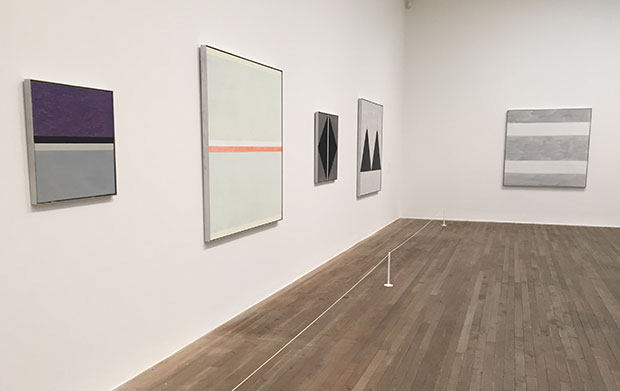
How would you describe the cycles of her work as represented in the Tate show? Well the early work is formative and she’s searching for herself. She develops the grid, which is a huge breakthrough in the history of art. If you think about it, the greatest organizing device in 20th century abstraction is the grid - from Mondrian onwards. And Agnes paired the painting down to just the grid. So that cycle of work is really important until 1975. The second cycle of work I think is very reductive and in a way very repressive. I think she’s denying herself any luxury of the act of painting. And then 8 years go by and suddenly there’s brushwork and there’s colour and she kind of opens up. There’s a late flowering. And it’s not unlike the paper cut outs of Matisse, it’s a reduction in colour. She’s painting the most blissful pictures and she says they’re about innocence, about happiness. She’s renouncing anything negative, anything intellectual. And she was an intellectual. She said 'I’m renouncing the intellect completely.' I said what was the hardest thing to renounce? She said 'the theory of relativity!' Isn’t that a good line? So I think the late flowering is extraordinary and I think it’s like the best of Monet, like Matisse. Really, the joy of living is in those paintings.
Do you think she had conquered her inner turmoils by this point? The best part of her life was her old age. She did conquer them to a degree, not completely. There were episodes that were uncomfortable but she would come back and paint again and continue where she was. But yes, I think that the best part of her life was her old age.
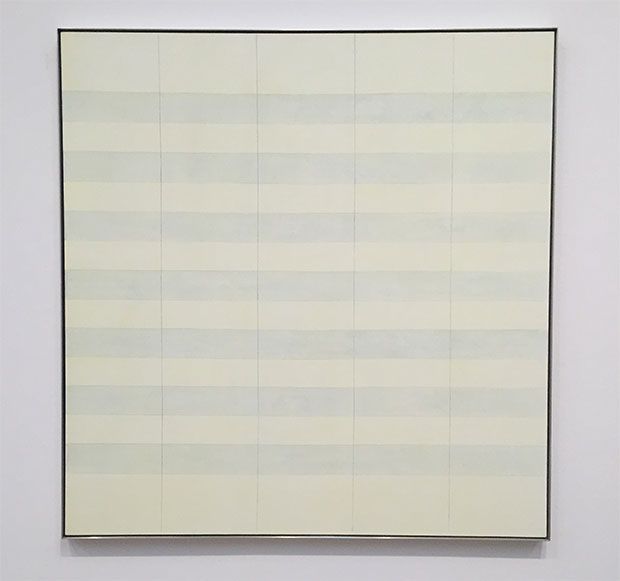
We love the image of her as an old lady, driving to her studio from the rest home each day in a big, white BMW - it seems like such an UnAgnes thing! It was a Mercedes, I gave it to her. I knew she liked white cars, I thought it looked a bit like a refrigerator! She was very proud of that car. When I gave it to her she said, ‘This is a car!’ She told everybody that I gave her that car, it was embarrassing! I remember once I gave her a watch for her 80th birthday. We had a little party and I gave her a Cartier watch and she opened it up and she said 'this is the classiest thing I’ve ever had in my life'. I never saw her wear it. . . She was a great person but she was an even greater artist."
In the next and final part of our interview, Arne talks about why Agnes isn’t as universally well known as her male Abstract Expressionist artists, what she would have made of the Tate retrospective, and how she's still influencing artists across the world today. Look out for it next week. Before then though, be sure to check out Arne's poignant, beautifully written Agnes Martin book in the store.